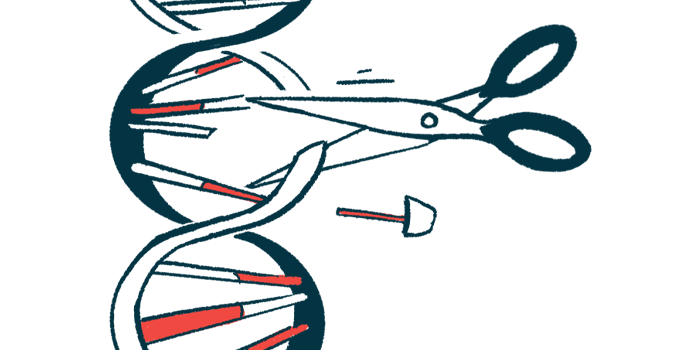Base editing better than CRISPR-Cas9 for gene editing in SCD: Study
ABE approach increased HbF expression to higher levels than Cas9
Written by |

A gene editing technology called adenosine base editing (ABE), wherein a single DNA building block is changed to increase fetal hemoglobin, may be more useful for treating sickle cell disease (SCD) than other gene editing techniques, a study suggests.
“We showed that not all genetic approaches are equal. Base editors may be able to create more potent and precise edits than other technologies. But we must do more safety testing and optimization,” Jonathan Yen, PhD, a study co-author at St. Jude Children’s Research Hospital, said in a news release.
The study, “Potent and uniform fetal hemoglobin induction via base editing,” was published in Nature Genetics.
“The science of gene editing is moving quickly and we are now able to envision multiple different strategies for combating sickle cell disease. These findings bring us a step closer to our goal of broadly available cures,” said John Tisdale, MD, study co-author at the National Heart, Lung, and Blood Institute.
SCD is caused by mutations that lead to an abnormal form of hemoglobin, the protein that red blood cells use to carry oxygen through the blood, being produced. The disease affects the adult form of hemoglobin.
Another form, called fetal hemoglobin (HbF), is produced during early development, but normally stops being made shortly after a birth. Because this form transports oxygen more efficiently than its adult counterpart, increasing HbF in adult cells is being pursued as a treatment strategy for SCD and beta-thalassemia, another disorder of adult hemoglobin.
Gene editing as treatment for SCD
One approach toward increasing HbF is gene editing, which seeks to alter the sequence of DNA in the gene that carries instructions for making this protein.
The fetal hemoglobin gene “is a good target for base editing because there are very precise mutations that can reactivate its expression to induce expression after birth, which may provide a powerful ‘one-size-fits-all’ treatment for all mutations that cause SCD and beta-thalassemia,” said Mitchell Weiss, MD, PhD, the study co-author at St. Jude.
A number of different gene editing technologies have been developed in recent years. One of the most well-known is called CRISPR-Cas9, which works by making a break in the cell’s DNA, then altering the DNA sequence using a template molecule. ABE, on the other hand, works to switch out an individual nucleotide, a building block of DNA.
In this study, researchers compared gene editing approaches using ABE or CRISPR-Cas9 to increase HbF levels. The researchers used either the Cas9 system to cut out parts of the HbF gene that normally help “turn off” the gene after fetal development or ABE to make alterations that can “turn on” the gene’s expression.
Comparing CRISPR-Cas9, ABE gene editing techniques
The ABE approach reliably increased HbF expression to higher levels than Cas9. Specifically, the researchers got the best results when they used ABE to create a change in the HbF gene sequence referred to as a -175A>G variant.
This genetic change lets a transcription factor called TAL1 bind to the HbF gene. Transcription factors are proteins that control whether genes are turned on or off. By binding to the HbF gene, the TAL1 transcription factor turns the gene on.
“We used a based editor to create a new TAL1 transcription factor binding site that causes particularly strong induction of fetal hemoglobin,” Yen said.
The Cas9 approach led to more DNA damage at other sites outside the HbF gene and the effect on HbF levels wasn’t as consistent.
“Creating a new transcription factor binding site requires a precise base pair change — something that can’t be done using CRISPR-Cas9 without generating unwanted byproducts and other potential consequences from [DNA] breaks,” Yen said.
Weiss said the researchers came upon “unanticipated problems” with conventional DNA-editing proteins.
“We were somewhat surprised that not every Cas9 insertion or deletion raised fetal hemoglobin to the same extent, indicating the potential for [variable] biological outcomes with that technology,” Weiss said.
The researchers tested different types of ABE technologies and found each has different pros and cons. Using an ABE protein called ABE8e led to more efficient editing of the HbF gene, but also caused more changes elsewhere in cells’ DNA. Another ABE protein called ABE7.10 was less efficient at targeting fetal hemoglobin, but caused fewer off-target changes.
“Through further protein engineering, it should be possible to further enhance the specificity and activity of base editing” to specifically target HbF, the researchers wrote. Further work to optimize the approach is already ongoing.






